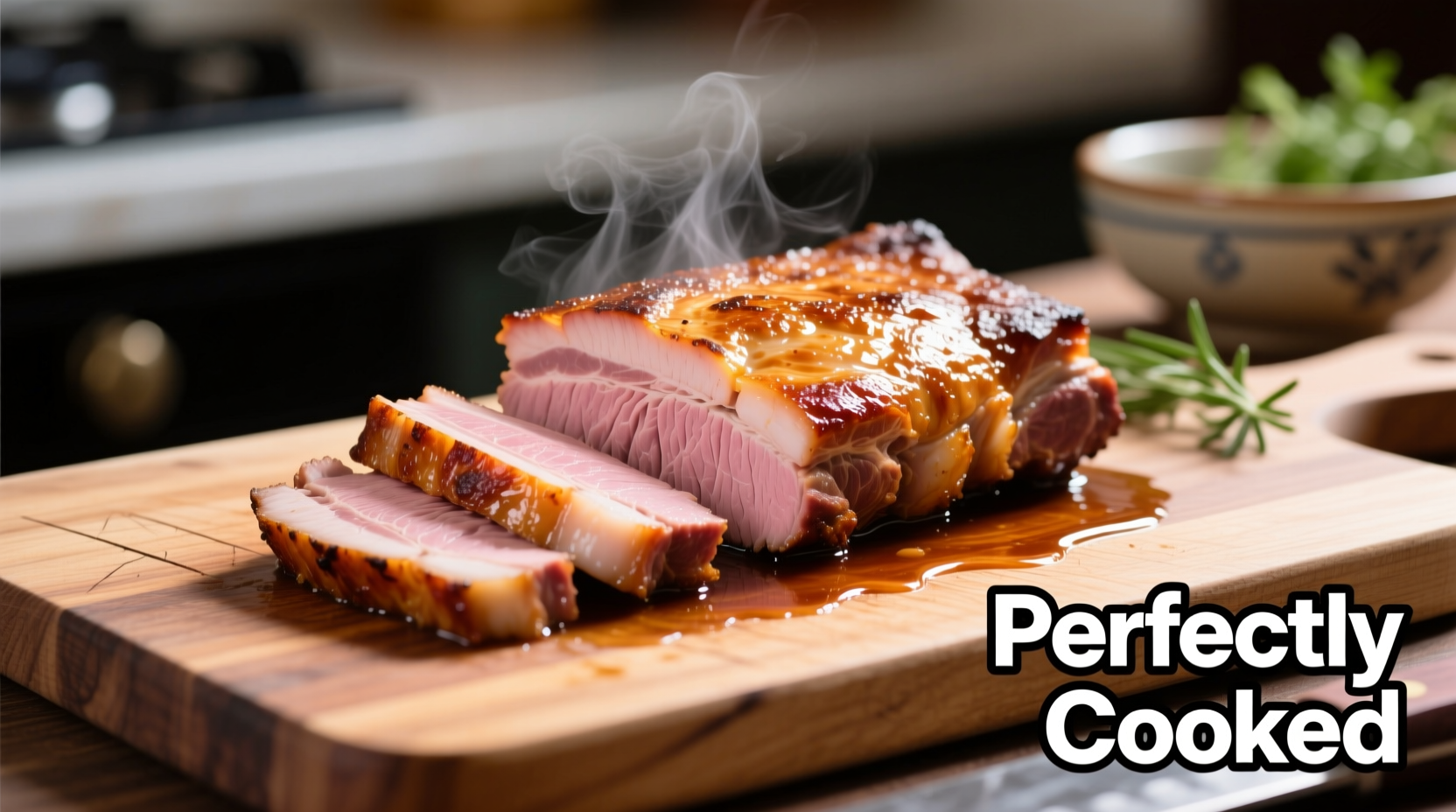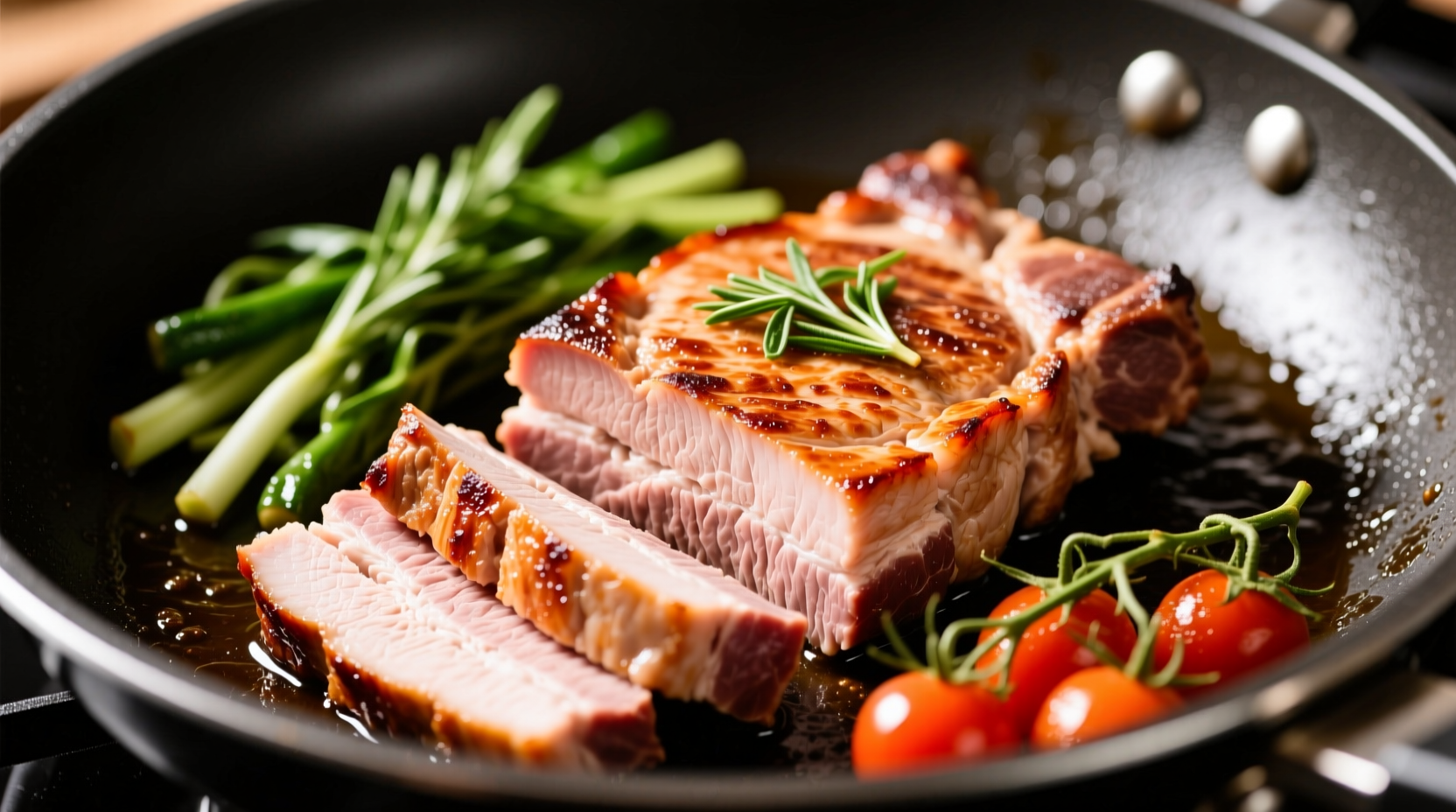Perfectly cooked pork fillet requires 15-20 minutes in a preheated oven at 400°F (200°C) or 6-8 minutes per side when pan-searing, until it reaches an internal temperature of 145°F (63°C) followed by a 3-minute rest period. This precise timing ensures juicy, safe-to-eat pork without overcooking.
Getting pork fillet timing right separates good home cooking from exceptional results. Whether you're preparing an elegant dinner or weeknight meal, understanding the variables that affect cooking time transforms this lean cut from potentially dry to perfectly tender. Let's break down exactly how to achieve restaurant-quality pork fillet every time.
Your Immediate Action Plan
Before you even heat your pan or oven, follow these critical steps for success:
- Thermometer check - Verify your meat thermometer works properly
- Temperature equalization - Remove pork from refrigerator 30 minutes before cooking
- Dry surface - Pat fillet thoroughly with paper towels for optimal searing
- Preheat properly - Ensure oven or pan reaches target temperature before adding meat
| Cooking Method | Time Per Side | Internal Temp | Rest Time |
|---|---|---|---|
| Pan-searing | 6-8 minutes | 145°F (63°C) | 3 minutes |
| Oven roasting | 15-20 minutes | 145°F (63°C) | 5 minutes |
| Grilling | 8-10 minutes | 145°F (63°C) | 4 minutes |
Why Timing Varies: The Science Behind Perfect Pork
Pork fillet cooking time isn't one-size-fits-all. Several factors determine your exact timing:
Thickness Matters Most
A 1-inch thick fillet needs approximately 6-8 minutes per side when pan-searing, while a thicker 1.5-inch cut requires 8-10 minutes. The USDA Food Safety and Inspection Service confirms that thickness directly impacts cooking duration, with each additional 0.5 inches adding 2-3 minutes to cooking time per side (USDA FSIS).
Starting Temperature Affects Results
Cold meat from the refrigerator creates uneven cooking. Allowing your pork to reach room temperature (about 30 minutes) before cooking reduces total cooking time by 15-20% and prevents the exterior from overcooking while the interior reaches proper temperature.

Step-by-Step Cooking Process
Preparation Phase (5 minutes)
Proper preparation sets the stage for perfect timing:
- Remove silver skin using a sharp knife at a 30-degree angle
- Dry thoroughly with paper towels (critical for proper searing)
- Season generously with salt 45 minutes before cooking (draws out moisture then reabsorbs for better seasoning)
- Bring to room temperature while oven or pan preheats
Cooking Phase: Method-Specific Timing
Pan-Searing Method (Most Common)
This technique delivers the best crust while maintaining precise timing control:
- Heat oil in heavy skillet to 375°F (190°C) - test with breadcrumb
- Sear first side 6-8 minutes without moving (creates proper crust)
- Flip and sear second side 5-7 minutes
- Optional: Add butter, garlic, and herbs during last 2 minutes for basting
- Remove when internal temperature reaches 140°F (60°C)
Oven-Roasting Method
Ideal for thicker cuts or multiple fillets:
- Preheat oven to 400°F (200°C)
- Sear all sides in hot pan (2 minutes per side)
- Transfer to oven and roast 12-18 minutes
- Check temperature 5 minutes before expected finish time
- Remove at 140°F (60°C) for carryover cooking
Avoiding Common Timing Mistakes
Even experienced cooks make these timing errors:
Over-Reliance on Time Alone
Time is just one indicator. An instant-read thermometer is essential because variables like stove heat intensity, pan material, and exact fillet thickness affect cooking speed. The National Pork Board emphasizes that temperature, not time, determines doneness (National Pork Board).
Skipping the Rest Period
That crucial 3-5 minute rest allows juices to redistribute. Cutting too soon releases precious moisture, resulting in drier meat despite perfect cooking time. During this rest, internal temperature typically rises 5-10 degrees (carryover cooking).
When to Adjust Standard Timing
These situations require timing modifications:
- Stuffed fillets - Add 5-8 minutes total cooking time
- Cold kitchen environment - Increase preheat time by 5 minutes
- Cast iron vs. stainless steel - Cast iron retains heat better, potentially reducing time by 1-2 minutes per side
- High altitude cooking - Above 3,000 feet, increase time by 10-15% due to lower boiling point
Serving Temperature Matters Too
Even with perfect cooking time, serving temperature affects enjoyment. Pork fillet tastes best when served between 130-135°F (54-57°C). If you've followed proper timing and resting, it should naturally fall into this range. Serving too hot masks subtle flavors, while too cold makes the texture less appealing.
Troubleshooting Timing Issues
Problem: Pork is overcooked despite following timing guidelines
Solution: Your heat source is likely too high. Reduce temperature by 25°F (15°C) and check temperature 2 minutes earlier next time.
Problem: Exterior burns before interior cooks
Solution: Sear at high heat for 2 minutes per side, then reduce heat to medium and cover pan for remaining cooking time.
Professional Timing Tips You Can Use
Restaurant chefs use these timing techniques at home:
- The touch test - Compare firmness to different parts of your hand (rare = palm base, medium = middle palm, well-done = thumb pad)
- Timed flipping - Flip every 90 seconds for more even cooking with less risk of overcooking
- Residual heat calculation - Remove meat at 140°F knowing it will rise 5-10 degrees during rest











 浙公网安备
33010002000092号
浙公网安备
33010002000092号 浙B2-20120091-4
浙B2-20120091-4